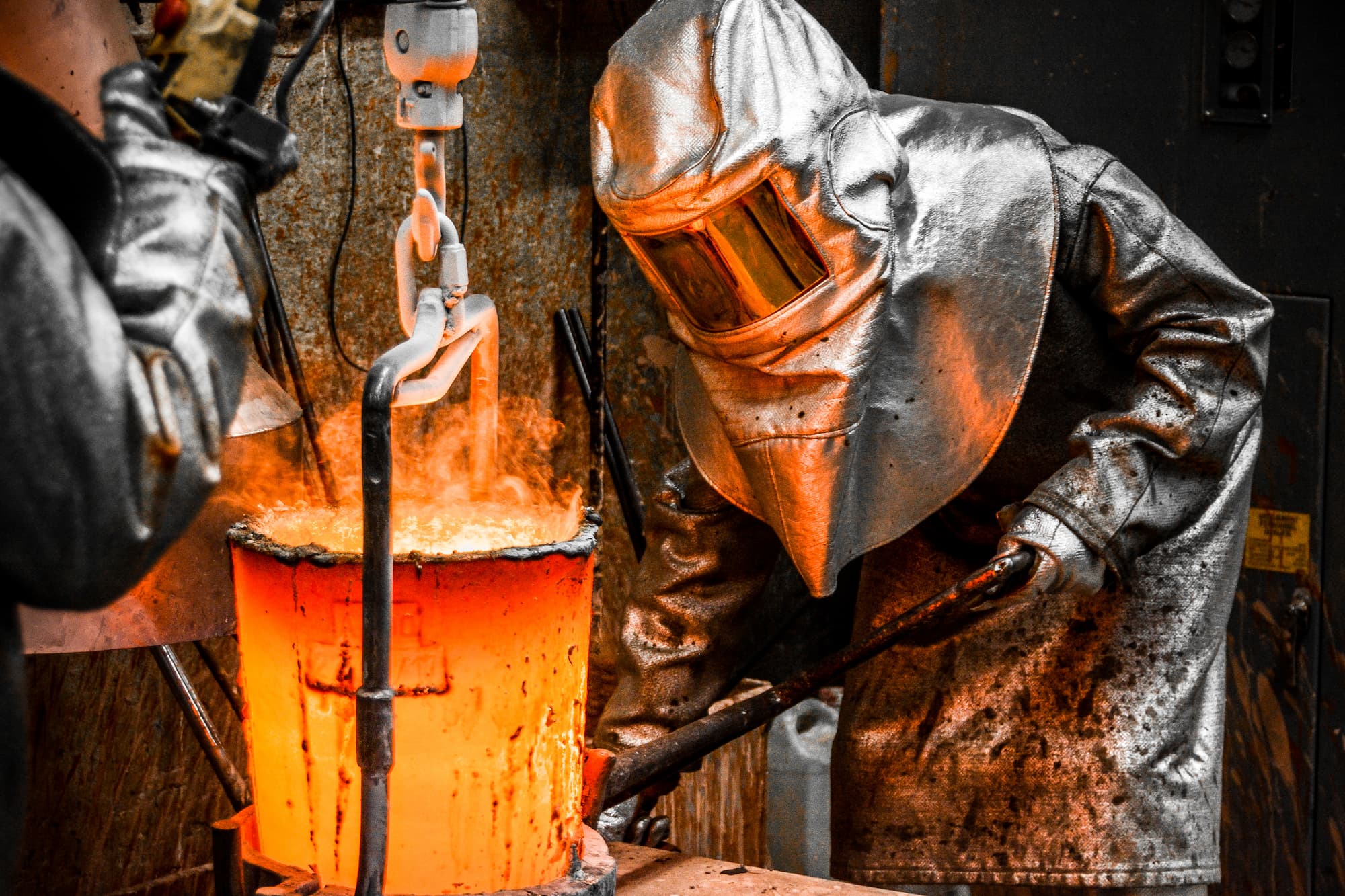Casting molds are vulnerable to numerous defects and traditionally rely on trial and error as a problem-solving approach. It includes an abundance of process variables that impact an assortment of potential defects.
The primary categories of manufacturing defects include:
- Metal shrinkage,
- Gas build-up,
- Metallurgical defects,
- Mold material issues (especially in sand casting),
- Casting shape, and
- Pour casting difficulties.
Even more common potential defects like pinholes, swells, burrs, scabs, hard spots, veins, buckles, and warping are included in these categories.
It can be challenging to navigate the delicate line between process factors and potential flaws. To avoid such obstacles, a mold casting organization should consider shifting its problem-solving efforts from a reactive approach to proactive problem prevention. This linchpin centers on process and quality improvements, improved maintenance, and simulation software.
While easier said than done, precision manufacturing in the casting industry is possible with a Lean culture throughout the organization combined with the best simulation software.
Defect Prevention with Lean Total Quality Management (TQM)
The first step is establishing a quality management system with Lean Total Quality Management (TQM) as a foundation throughout the organization. It requires top-down buy-in and has everyone in the organization focusing on quality improvement to boost customer satisfaction and eliminate waste. Cross-functional teams use Statistical Process Control (SPC) and other data-driven problem-solving tools to solve errors and improve the cast molding process and procedures. However, changing a company's culture is not always straightforward.
An authentic TQM culture is where the employee owns the process and delivers 6-sigma results with support at every level. The lean approach helps improve the melting and flux operations, ensures consistent metal temperatures, and enhances mold drying procedures, mold wash operations, and the pouring process. Also, sand qualities like size, texture, refractoriness, and the proper additives are verified as part of the sand casting process.
Total Productive Maintenance (TPM), which involves routine maintenance chores to foresee and avoid tool and die issues, is another component of lean manufacturing. The goal is to eliminate breakdowns, defects, and downtime with no accidents. Planned maintenance is performed by tooling while the operator often performs scheduled maintenance tasks.
These tasks are based on historical data to establish a predictive schedule. Data is compiled to show the overall uptime and equipment effectiveness with monitoring, planning, and problem-solving.
TPM will circumvent various issues, including:
- Wear,
- Mold shift,
- Loose box pins,
- Inaccurate pattern dowel pins,
- Adding filters,
- Long tooling change-overs, and
- Improper clamping.
Combining Lean culture with high-performance simulation software is the key to quickly attaining precision manufacturing. Computers and software tools made possible by technological advancements in recent years enable us to design flawlessly at the office and improve the casting mold procedure. Such software assists the design of the desired form, fit, function, and manufacturability, along with fine-tuning rigging design, dimensions, tolerances, and exact material specifications to meet durability, stiffness, and natural frequency targets.
The designer can fine-tune all aspects of the computer model and reduce the time to market. The use of software can eliminate most, if not all, production troubleshooting, minimize scrap and defects, and improve design time. Designing the proper casting geometry and the rigging design is critical to avoid issues such as parting lines, coring, and draft. This is possible to evaluate before producing the first part.
Other Benefits of Casting Mold Software
Forming processes, including liquid materials, metallic solids, and polymers, are now easily engineered. The benchmark is Transvalor Americas, which carries a variety of cast molding software to design several processes, including liquid materials, metallic solids, and polymers. We have computer modeling software for all metal casting applications.
We have software that specializes in:
- Cold forming,
- Plastic deformation,
- Heat treatment,
- Continuous casting,
- PU Foam injection,
- Analyzing metallurgical changes,
- Defect prediction, and
- Overall process optimization.
Our suite of products can also mitigate, if not prevent, defects associated with:
- Venting,
- Heat sink,
- Mold strength,
- Gating,
- Runner design,
- Warping, and
- Optimizing mold performance.
The biggest obstacle to implementing Lean is a company’s commitment to strategic thinking and the vision to succeed. Leaders must set standards by modeling appropriate behavior, communicating, and educating. The Lean approach can eliminate much of the mystery in corralling defects. Advanced simulation software takes problem-solving to another level as an essential engineering tool to predict, qualify, and quantify products. Together, world-class cast molding is practically a foregone conclusion.
Learn More
The first step to consider is the benchmark software by Transvalor Americas. We carry 3-D simulation software for different types of metal casting processes, including the industry's best technical support and problem-solving built into the casting software. Contact Transvalor USA to learn how casting simulation software improves the casting mold procedure while minimizing scrap and defects.


